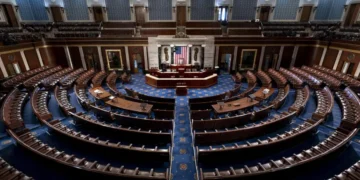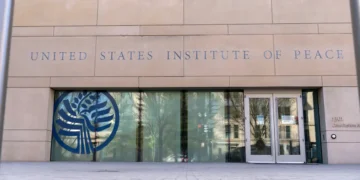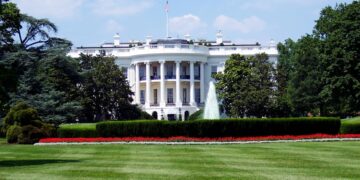March 29, 2025 Story by: Editor
WASHINGTON (AP) — A federal appeals court ruled on Friday that former President Donald Trump had the authority to dismiss two board members from independent agencies responsible for handling labor-related issues.
A divided panel of three judges from the U.S. Court of Appeals for the District of Columbia Circuit voted to lift prior orders that had prevented the Trump administration from removing Cathy Harris, a member of the Merit Systems Protection Board (MSPB), and Gwynne Wilcox, a member of the National Labor Relations Board (NLRB).
On March 4, U.S. District Judge Rudolph Contreras ruled that Trump had unlawfully attempted to dismiss Harris. Two days later, U.S. District Judge Beryl Howell determined that Trump did not have the power to remove Wilcox.
The Justice Department subsequently asked the appeals court to set aside these rulings while they continued their legal challenge.
President Joe Biden had nominated Harris to the MSPB in 2021 and reappointed Wilcox to a second five-year term on the NLRB in 2023.
Circuit Judge Justin Walker, a Trump appointee, indicated that the administration was likely to prove that statutory protections preventing the removal of MSPB and NLRB members were unconstitutional.
“The Government has also shown that it will suffer irreparable harm each day the President is deprived of the ability to control the executive branch,” Walker stated.
Judge Karen LeCraft Henderson, appointed by former President George H.W. Bush concurred with Walker’s opinion, agreeing with many of his arguments regarding presidential authority under the Constitution.
However, Judge Patricia Millett, an appointee of former President Barack Obama, dissented, arguing that her colleagues disregarded Supreme Court precedent and contradicted previous rulings from the court.
“The stay decision also marks the first time in history that a court of appeals, or the Supreme Court, has licensed the termination of members of multimember adjudicatory boards statutorily protected by the very type of removal restriction the Supreme Court has twice unanimously upheld,” Millett wrote.
Government attorneys asserted that Trump had the legal power to remove both Harris and Wilcox. In Wilcox’s case, they argued that Howell’s decision “works a grave harm to the separation of powers and undermines the President’s ability to exercise his authority under the Constitution.” They also maintained that MSPB members, like Harris, could be dismissed by the president “at will.”
Wilcox’s legal team countered that Trump could not remove her without due process, including prior notice, a hearing, or evidence of “neglect of duty or malfeasance in office.” They further argued that the administration’s best chance at winning the case would be to convince the U.S. Supreme Court to take a broader stance on presidential authority.
Similarly, Harris’ attorneys contended that the government was asking the appeals court to disregard Supreme Court precedent.
“Make no mistake: The government’s radical theory would upend the law,” they stated. “It would jeopardize not only this board, but also the Federal Reserve Board and other critical entities, like the Securities and Exchange Commission.” Following Wilcox’s removal, the five-member NLRB lacked a quorum, while the three-member MSPB, which oversees workplace civil rights laws, was similarly impacted.
Source: US News
















